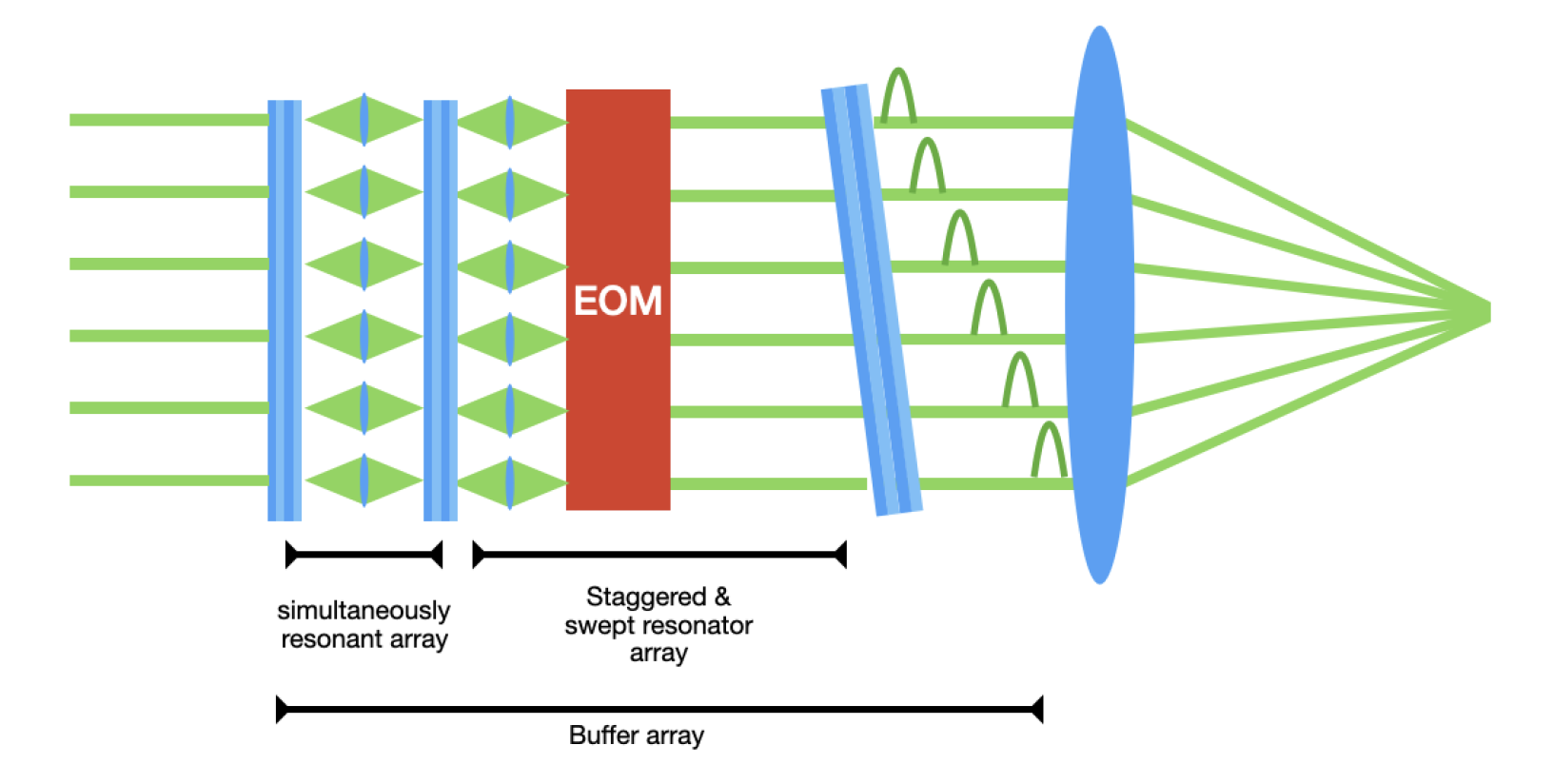Docket #: S24-044
Spatiotemporal Optical Multiplexer/Demultiplexer -- Optical SerDes
Quantum scientists in the LINQS, Schuster, and Simon Labs at Stanford have developed a method of multiplexing many low-light optical fields onto a single fast sensor. Ultrafast, high efficiency, single-photon sensitive cameras would be an enabling tool for innumerable quantum technologies from superresolution imaging to quantum computing and networking. The current state-of-art leverages electron multiplied or qCMOS cameras with millions of pixels and kHz of bandwidth, limiting the ability to simultaneously time- and space- resolve low light dynamics. The Stanford invention serializes (in time) light from many input spatial modes (pixels) into a common output (either a single output mode or multiple), where it can be detected on a single-pixel, ultra high speed ultra low noise photosensor. (See figure 1.) The approach leverages an array of storage cavities to buffer light from the array of input pixels, and an array of dump cavities with a fast frequency tuning element (Electro-Optic Modulator, etc.) to tune these dump cavities sequentially through resonance with the storage cavities. This spatiotemporal optical multiplexer/demultiplexer could create a faster, lower spatial resolution camera with low latency while maintaining light detection efficiency and extremely low noise, transforming quantum science, bio-imaging, and more.

Figure 1 Buffer array with coupled cavity arrays + EOM
(Image courtesy the LINQS, Schuster, and Simon Labs)
Serialization and deserialization of light from many spatial modes to/from a single mode is critical everywhere from interconnects in computers to networks, and sensors. A simple and robust way to achieve this, with minimal required control hardware, promises to be transformative across communications, quantum science, biosensing ,and medical imaging.
Stage of Development – Proof of Concept Prototype
Applications
- Quantum computers and repeaters
- Optical networking and interconnects
- Microscopes/sensors with parallel readouts for vastly increased throughput and area coverage
- Ultra-high-speed cameras (MHz frame rate) at higher intensities
- Parallelized fluorescence/fluorescence-lifetime microscopy (FLIM) for faster imaging speed, and enhanced resolution and signal–noise ratio
Advantages
- Vastly increased bandwidth
- High quantum efficiency
- Extremely low noise per spatial mode
- Lower cost, improved efficiency, improved flexibility:
- The ability to share, in real-time, an expensive sensor (single photon counter, etc...) between numerous channels with only a modest reduction in temporal resolution.
- The ability to trade timing resolution for reduced dark counts and increased spatial resolution in a photon counter.
Related Links
Similar Technologies
-
Phase Shifting by Mechanical Movement in Integrated Photonics Circuits S15-472Phase Shifting by Mechanical Movement in Integrated Photonics Circuits
-
Wavefront manipulation by electrically and fluidically tuned polymer metasurfaces S22-224Wavefront manipulation by electrically and fluidically tuned polymer metasurfaces
-
Quantum electro-optic converter S16-292Quantum electro-optic converter